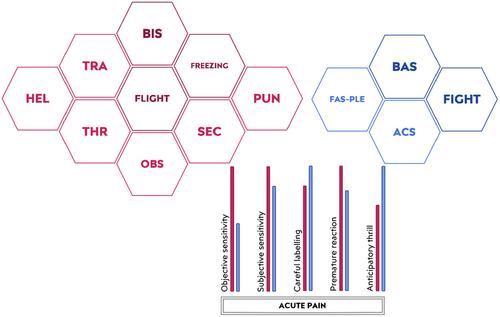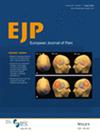The relatively stable individual differences reflected in Grey's revised reinforcement sensitivity theory (rRST), with foundations in neurophysiology and learning theory, appear particularly applicable to the study of pain. However, remarkably little research has been conducted in this area. In acute pain, activation of the behavioural approach system (BAS), the behavioural inhibition system (BIS) and the fight, flight, freezing system might depend on an individual's evaluation of pain. It was thus hypothesised that higher-order interactions of rRST traits and pain attitudes affect pain responsiveness.
To investigate relationships between rRST traits and pain attitudes and to identify patterns between clusters of participants, we conducted a study in which N = 275 healthy participants filled in Reuter and Montag's rRST-Q and the General Attitudes Towards Pain Inventory (GATPI). Experimental (pressure, electrical, thermal) and self-report data of pain responsiveness were collected in a subsample (N = 113).
We found significant correlations between rRST-Q and GATPI subscales of up to r = 0.34. Two clusters were identified, significantly differing in rRST-Q and GATPI scores. Pain avoiders, characterized by high BIS, flight, freezing and negative pain attitudes, were found to be significantly more pain sensitive than pain approachers, characterized by high BAS, fight and positive pain attitudes. Moderate effects (d = 0.56 to d = 0.70) were demonstrated in subjective and objective measures and across pain modalities.
The present study expands the scientific knowledge on factors influencing pain responsiveness. Future research is needed to confirm implications for chronic pain prevention and therapy, particularly concerning pain avoiders.
We have identified two clusters of participants, pain avoiders and pain approachers, that not only present differential patterns of revised reinforcement theory traits and general attitudes towards pain but also differ in their pain responsiveness. Pain avoiders appeared more pain sensitive compared to pain approachers, both in objective and subjective measurements, with implications for the improvement of chronic pain prevention and therapy.



